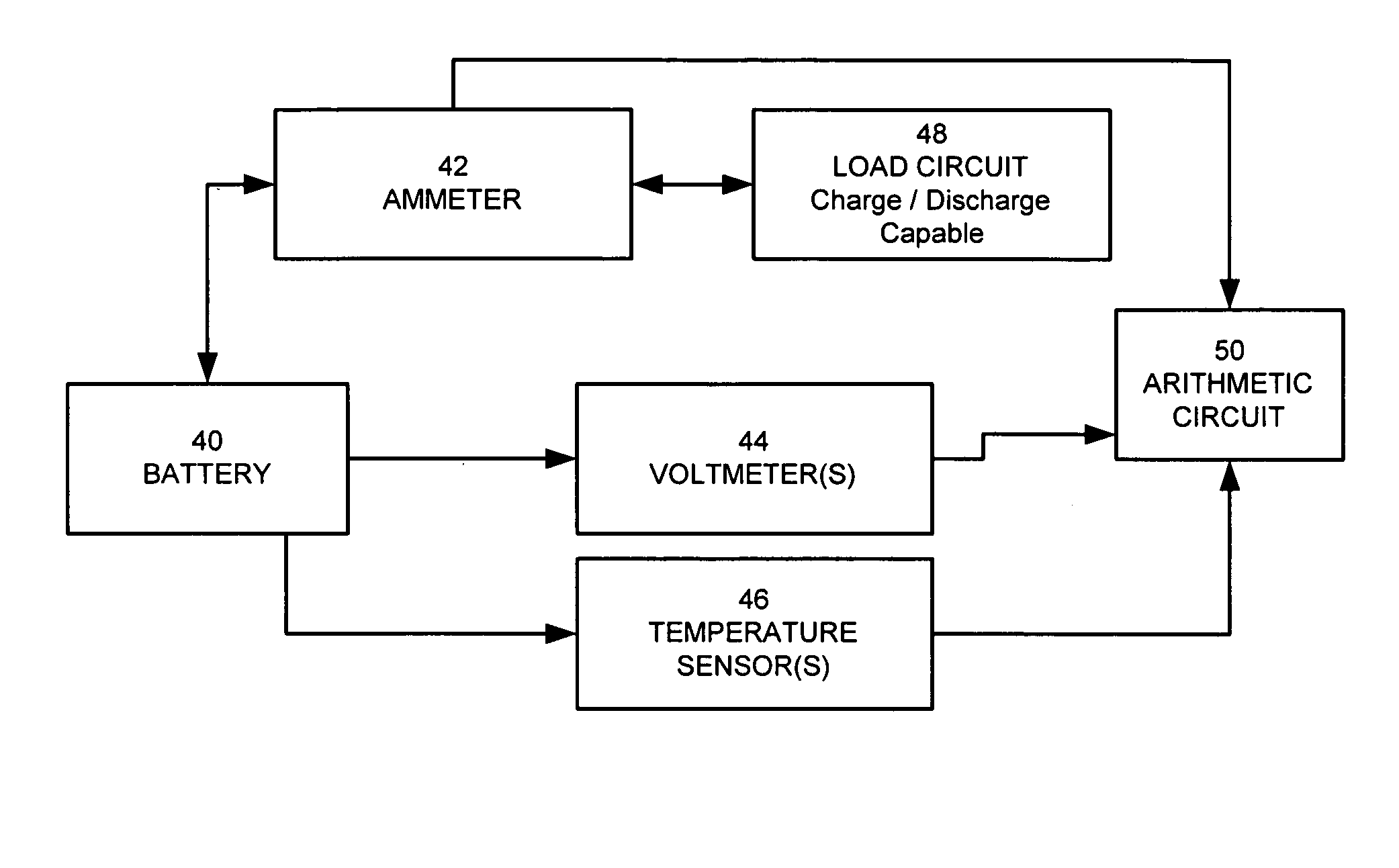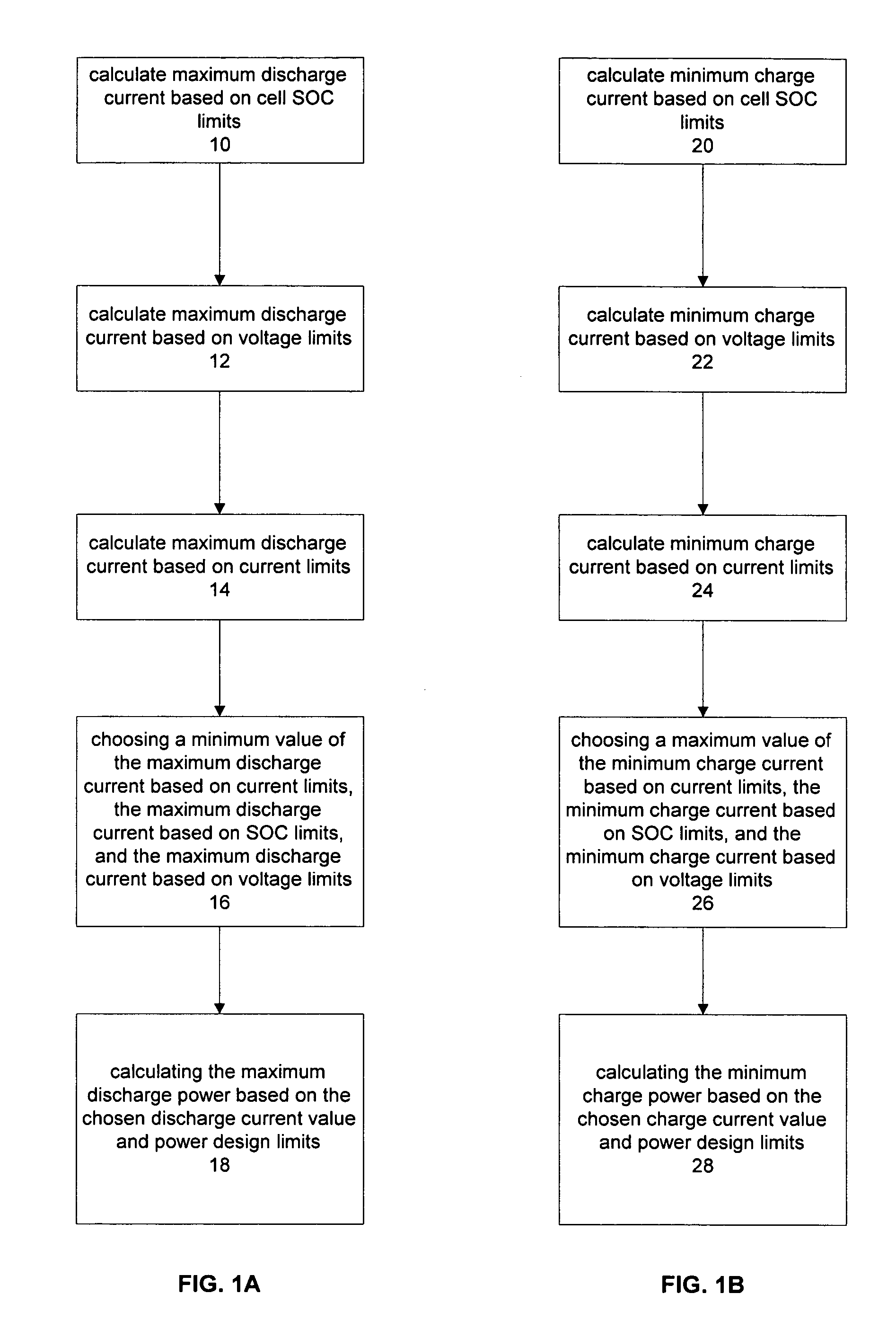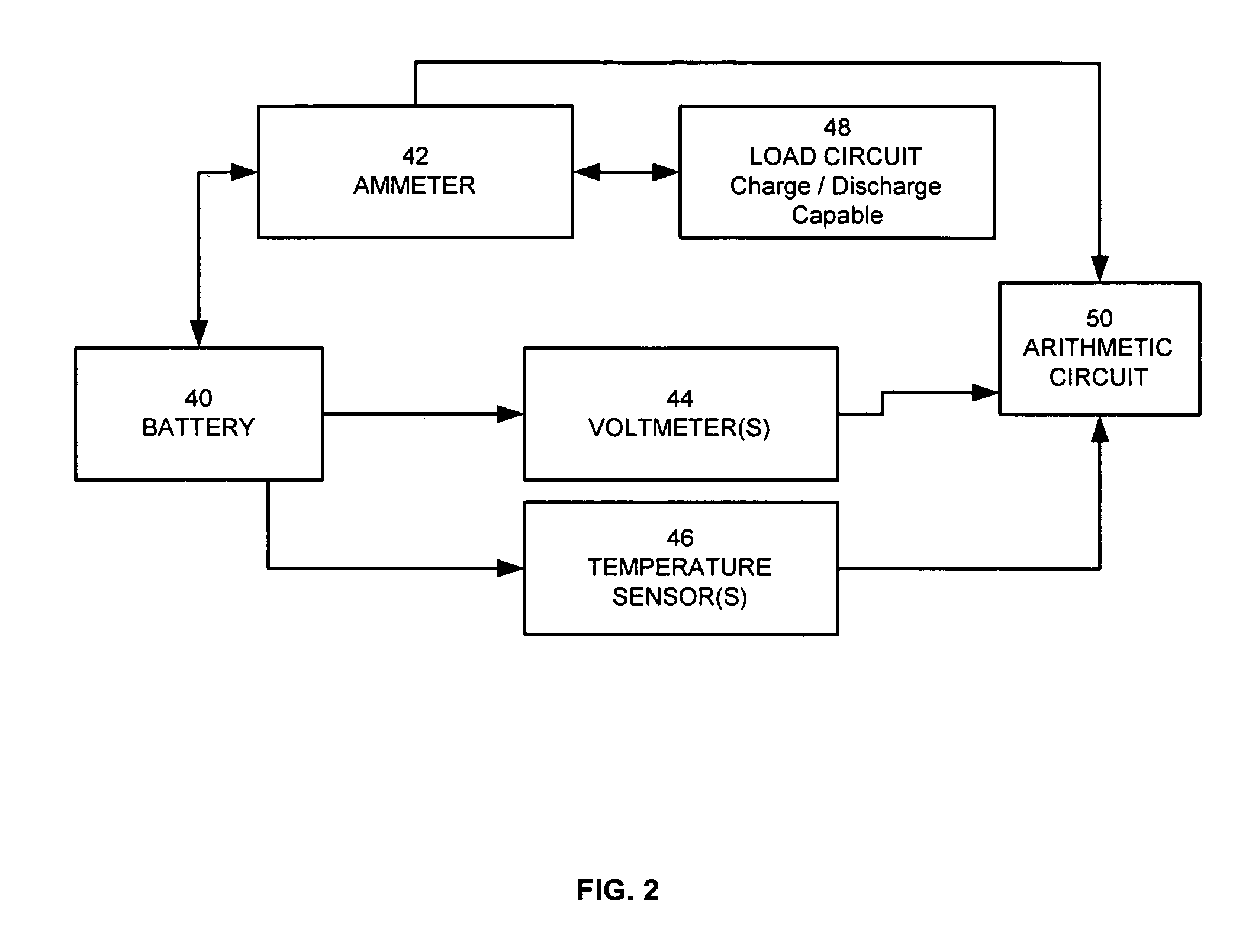Method for calculating power capability of battery packs using advanced cell model predictive techniques
a cell model and power capability technology, applied in the field of battery charge power and discharge power estimation, can solve the problems of inefficient battery use, inconvenient use, and limited prior art charge calculation methods in several respects
- Summary
- Abstract
- Description
- Claims
- Application Information
AI Technical Summary
Benefits of technology
Problems solved by technology
Method used
Image
Examples
Embodiment Construction
[0038]Embodiments of the present invention relate to battery charge estimation for any battery-powered application. In one embodiment, the estimator method and apparatus find the maximum absolute battery charge and / or discharge power (based on present battery pack conditions) that may be maintained for Δt seconds without violating pre-set limits on cell voltage, state-of-charge, power, or current.
[0039]FIGS. 1A and 1B illustrate an overview of the embodiments of the present invention. FIG. 1A shows a method for finding the maximum discharge power for a user-defined time horizon Δt, i.e. how much power may be drawn from the battery continuously for use for the next Δt time period. In vehicle applications, accurate estimation of maximum discharge power can help prevent the hazardous occurrence of over-drawing the battery.
[0040]In step 10, the maximum discharge current is calculated based on pre-set limits on state-of-charge. The estimation explicitly includes a user-defined time horiz...
PUM
| Property | Measurement | Unit |
|---|---|---|
| discharge current | aaaaa | aaaaa |
| charge currents | aaaaa | aaaaa |
| constant current | aaaaa | aaaaa |
Abstract
Description
Claims
Application Information
 Login to View More
Login to View More - R&D
- Intellectual Property
- Life Sciences
- Materials
- Tech Scout
- Unparalleled Data Quality
- Higher Quality Content
- 60% Fewer Hallucinations
Browse by: Latest US Patents, China's latest patents, Technical Efficacy Thesaurus, Application Domain, Technology Topic, Popular Technical Reports.
© 2025 PatSnap. All rights reserved.Legal|Privacy policy|Modern Slavery Act Transparency Statement|Sitemap|About US| Contact US: help@patsnap.com



